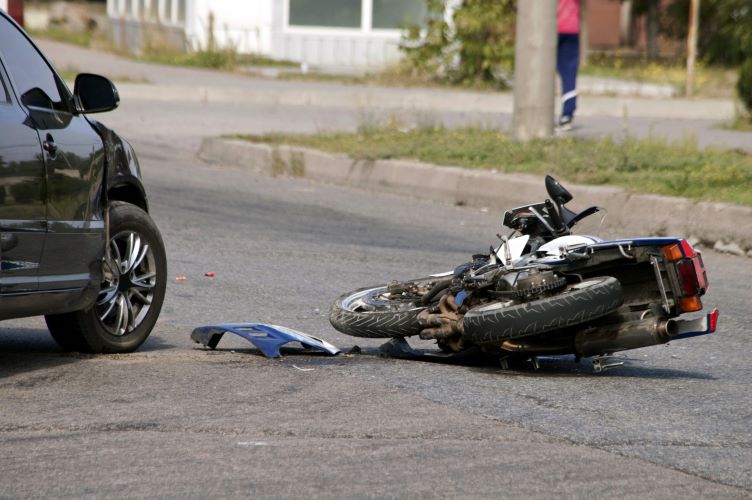Physical Address
304 North Cardinal St.
Dorchester Center, MA 02124
Physical Address
304 North Cardinal St.
Dorchester Center, MA 02124

An Unfortunate Incident on the Open Road: The roar of engines echoed through the winding roads, as a group of motorcyclists embarked on their weekly ride. Little did they know that fate had a cruel twist in store, one that would forever alter the course of their lives.
The Gravity of Motorcycle Accidents: While the thrill of riding a motorcycle is undeniable, the consequences of an accident can be catastrophic. These powerful machines, capable of reaching exhilarating speeds, demand unwavering focus and respect from their riders.
Learning from Tragedy: A Path Forward: In the aftermath of a devastating incident, it is crucial to reflect on the lessons learned, to honor the fallen, and to forge ahead with renewed determination to prevent such tragedies from occurring again.
The Importance of Safety Awareness: Riding a motorcycle is a privilege, one that carries immense responsibility. By cultivating a culture of safety awareness, riders can mitigate risks and ensure that every journey is a joyous one.
The siren call of speed can be intoxicating, but it is a temptation that must be resisted. Excessive velocity not only increases the likelihood of accidents but also compounds the severity of their consequences.
Abrupt and ill-advised lane changes are a recipe for disaster on the open road. Motorcyclists must exercise patience and vigilance, ensuring that every maneuver is executed with precision and foresight.
In an age of constant connectivity, the allure of digital devices can be a perilous distraction. Responsible riders must resist the urge to engage with their gadgets while in motion, as a momentary lapse in concentration can lead to irreversible consequences.
The elements can be unpredictable and unforgiving, presenting unique challenges for motorcyclists. From slick surfaces to reduced visibility, riders must be prepared to adapt to ever-changing weather patterns.
Potholes, debris, and other road hazards can pose significant threats to motorcyclists. Maintaining situational awareness and employing defensive riding techniques are paramount in navigating these potential perils.
Mastering Motorcycle Control: Riding a motorcycle is a skill that requires dedication and practice. Through comprehensive training and a commitment to continuous improvement, riders can develop the muscle memory and reflexes necessary to handle their machines with confidence and precision.
Defensive Riding Techniques: Anticipating the actions of other motorists and adopting a proactive approach to riding can mean the difference between a safe journey and a tragic accident. Defensive riding techniques equip riders with the tools to identify and mitigate potential hazards.
Staying Alert and Vigilant: Complacency is the enemy of safety on the road. Riders must remain ever-vigilant, scanning their surroundings for potential threats and maintaining a heightened state of awareness at all times.
Also Visit: Business with Rock Auto: A Comprehensive Review
Regular Inspections: Catching Issues Early: Preventative maintenance is crucial for ensuring the longevity and reliability of a motorcycle. Regular inspections by qualified professionals can identify potential issues before they escalate into major problems, reducing the likelihood of mechanical failures on the road.
Tire Care: Ensuring Optimal Grip: A motorcycle’s tires are its sole point of contact with the road, making their condition paramount. Proper tire pressure, tread depth, and alignment can mean the difference between maintaining control and losing traction in critical situations.
Brake Maintenance: Your Life-Saving System: Brakes are a rider’s most vital safety mechanism, capable of bringing a motorcycle to a controlled stop in emergency situations. Regular brake inspections, fluid changes, and pad replacements are essential for ensuring their optimal performance.
Some of the leading causes include speeding, reckless lane changes, distracted driving, adverse weather conditions, and road hazards. These factors can significantly increase the risk of accidents and highlight the importance of defensive riding techniques and vigilance.
Wearing appropriate protective gear, such as helmets, riding jackets, pants, and boots, can significantly reduce the severity of injuries in the event of an accident. These items act as a crucial line of defense, safeguarding riders from impacts, abrasions, and other potential hazards.
Regular maintenance is essential for ensuring the reliable performance of a motorcycle. Routine inspections, tire care, and brake maintenance can help identify potential issues before they escalate into major problems, reducing the likelihood of mechanical failures on the road.
Fostering a spirit of cooperation and mutual respect is key to creating a safer environment for all road users. Educating drivers about motorcycle awareness, respecting motorcyclists’ space, and promoting teamwork on the road can go a long way in preventing accidents and ensuring everyone reaches their destination safely.
In the wake of a motorcycle accident, riders and their loved ones may face emotional trauma, legal challenges, and other difficulties. Seeking professional counseling, consulting with experienced legal professionals, and leaning on a supportive community can be invaluable in navigating the healing process and protecting one’s rights.